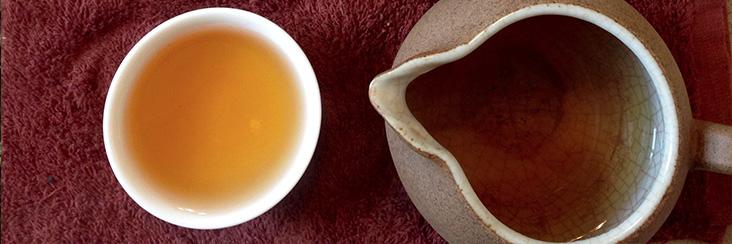
Introduction To Dong Ding Tieguanyin Oolong Tea | Eco-Cha Tea Club
Dong Ding Tieguanyin Oolong — Never Heard Of It? Neither have we. That's why it's the first choice of the recent winter's harvest for January's Eco-Cha Tea Club. We've given it the name Dong Ding Tieguanyin Oolong simply because it is the first crop of Tieguanyin tea trees being cultivated and crafted in the heart of Dong Ding Oolong Country. Planted less than five years ago, and harvested in the last two, this is a batch of tea that we are genuinely thrilled about. Not only because of its uniqueness, but primarily because of how it tastes.

This tea strain offers a fragrant, fruity, subtly fermented character that puts it in a category of its own. Particularly since it has been cultivated and cured by a pioneering 77 year-old Dong Ding Oolong artisan. Mr. Su has shared his fine tea, stories, and deep knowledge of traditional tea making with us for many years, and is our favorite "tea elder" to visit in his home factory while he works his magic in roasting tea.
The reason this batch of tea is unique is that it's a merging of regional traditional tea making styles in Taiwan. It is a novel incarnation of a traditional Oolong Tea that combines tradtional Tieguanyin tea making techniques from northern Taiwan with Dong Ding Oolong methods in central Taiwan. Tieguanyin was brought over from China and has been cultivated and made in the traditional fashion in northern Taiwan for many decades. This traditional form of tea making has since been mostly phased out in mainland China and replaced with a version of "Luguanyin" or "Green Tieguanyin". Basically, this is a minimally oxidized, unroasted Oolong that replicates Taiwan's style of "High Mountain Tea". It's the modern, high-volume, minimally processed style of Oolong tea production.
Traditional Tieguanyin has virtually become an "endangered species" of tea in that so little is still being produced. This new version of tea that combines two distinctly different traditional tea making styles that have evolved in specific regions of Taiwan is an anomaly that we find very significant. We also happen to like this new traditional hybrid even more than its heavier oxidized, heavier roasted predecessor of Tieguanyin. This elder craftsman is using his decades of tea making experience and integrating two different tea making styles to create a new phenomenon of traditional Oolong tea. How exciting is that?!
We have more windows of images and information to open for you very soon — into the source of this new incarnation of traditional Taiwanese Oolong Tea.

